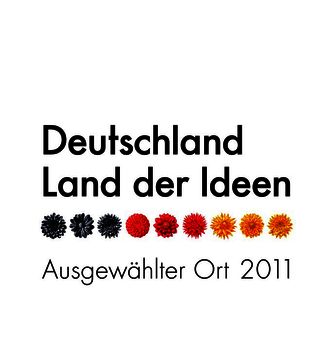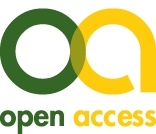Teaching staff in interprofessional education: A proposed terminology
Gert Ulrich 1Hermann Amstad 2
Olivier Glardon 3
Sylvia Kaap-Fröhlich 4
1 Careum Foundation, Department of strategy and innovation, Zurich, Switzerland
2 amstad-kor, Basel, Switzerland
3 Society of Swiss Veterinarians, Bern, Switzerland
4 Zurich University of Applied Sciences, Institute of chemistry and biotechnology, Wädenswil, Switzerland
Abstract
Different terms (e.g., interprofessional, multiprofessional, interdisciplinary) are used in interprofessional education and collaboration without sufficient differentiation or precision in regard to meaning. In recent years academic publications in English and German have contributed to clarifying this issue. However, there are no definitions internationally or in the German-speaking countries (Germany, Austria, Switzerland) specifically referring to the people engaged in teaching interprofessional education. Teaching in interprofessional education has evolved from the traditional role of expert to one of mentor or facilitator. It is also evident that those who teach play a central role in the success of interprofessional courses. While many different designations are used to refer to interprofessional teachers in the relevant literature and in the language of daily use, a uniform and adequate terminology should be used to refer to such teaching staff. Based on literature reviews, this commentary seeks to propose terms for teaching staff active in the area of interprofessional education and thus provide a basis for discussion in the German-speaking countries. Taking the results of the literature analysis and the roles of teachers in interprofessional settings into consideration, we propose that the English term “IP facilitator” (IP for interprofessional) should also be used in the German-speaking world and “facilitateur IP” in the French-speaking world. A French translation is included in attachment 1 [Att. 1] to enable broader discussion in Switzerland.
Keywords
terminology, facilitator, supervisor, educator, teacher, interprofessional collaboration
1. Introduction
Many terms are used in the context of interprofessional education (IPE) and interprofessional collaborative practice (IPCP) in healthcare, in part without clear differentiation or precision of meaning (inter-, intra-, multi- or transprofessional, inter- or multidisciplinary, etc.). Help in interpreting these terminologies from an international or English-language perspective is found in Khalili et al. [1] and for German speakers in Mitzkat et al. [2]. Those who teach are described as a central factor in the success of interprofessional learning settings [3], [4], [5], [6], [7]. Despite the presence of many confusing terms in the literature to identify and describe this group of people [3], [5], [6], [8], [9], [10], [11], there is, to our knowledge, no clarification of the terminology internationally or in the German-speaking countries (Germany, Austria, Switzerland).
Therefore, the aim of this paper is to propose a uniform terminology based on literature reviews for teaching staff in IPE settings, both in general and specifically for the German-speaking world, along with a French translation for Switzerland. Naturally, this proposal can and should be discussed and debated further.
2. Teaching staff in interprofessional education settings
2.1. Roles of interprofessional teaching staff
In general, for many teachers engaged in IPE there is a switch from the traditional didactic role as experts to one of interactive, supportive mentors to enable interprofessional education in which the students can learn with, from and about each other [6], [11], [12], [13], [14], [15], [16], [17]. The actual act of educating in IPE is described in the literature with a great degree of consensus as “facilitating” [3], [4], [6], [7]. This specific role should also be captured by an appropriate term for those who teach interprofessionally. Reference is specifically made to Oandasan & Reeves [11], Hylin [15], and Adhikari [12] for detailed explanations of the characteristics, roles and responsibilities of interprofessional teachers.
2.2. Designations for interprofessional teaching staff
Widely varying terms are found in the literature to describe interprofessional teaching staff, such as “facilitator”, “mentor”, “supervisor”, “coach”, “trainer”, “teacher”, “educator”, “counsellor”, “tutor” and even “preceptor”. It is also the case that in different health professions various terms are used for (monoprofessional) teachers or trainers and then applied to IPE in an uncritical manner [8].
The terms “mentor” and “mentoring” are found, for example, in Marshall & Gordon [9], [18] and Arthur & Russell-Mayhew [8]. These authors understand mentoring to mean the creation of conditions under which students and trainees of different professions can learn from and with each other. However, in other publications “mentoring” is described as going beyond educational settings to encompass the personal and professional development of the less experienced person [19], [20]. Explanations of “mentoring” as a concept also describe it as a relationship between only two people (dyadic), which does not explicitly correspond to the interprofessional setting [19].
In contrast to “mentor”, the term “supervisor” is more widely present in the IPE literature, for example, in Oosterom et al. [5] where this term is used to designate those teaching on interprofessional training wards. However, the word “supervisor” is used more traditionally in monoprofessional education [8], [21], [22], in one-on-one situations between “supervisors” and learners, and mainly – like “preceptors” – in practical post-graduate training in healthcare [23], [24]. Hence, the term “supervisor” does not differentiate between monoprofessional and interprofessional education in a way that is distinct in Gribble et al. [22], who refer to profession-specific “supervisors” but to “facilitators” in the interprofessional context.
The term “facilitator” used in reference to interprofessional training staff is found particularly in relevant, often-cited reviews and guidelines [3], [6], [13], [25], [26], [27]. Lie et al. [28], for instance, range from using monoprofessional “clinician educator” to interprofessional “facilitator”, and Brewer & Barr [3] speak not only of the “supervisor” but also the “facilitator”, yet mainly use the term “facilitator” for IPE teachers in their paper. Reeves et al. [6] also use multiple terms (“teacher”, “mentor”, “preceptor” and “supervisor”) while favoring “facilitator” and using it elsewhere. The term “facilitator” is also used outside of clinical IPE, such as in interprofessional classrooms, simulations, and e-learning [14], [16], [29]. Admittedly, the term “facilitator” is not reserved solely for IPE settings. This term is also used in problem-based learning (PBL) [30], where “PBL facilitators” are specifically discussed [30].
Selected German publications speak, in part, of “Lehrende” [31], “Lernbegleitende” [32], [33] and also “facilitators” [33]. When looking at German interprofessional training wards, Mihaljevic et al. [10] and Mette et al. [34] differ by speaking in German of “Lernbegleitende” [10] and “Supervisoren” [34], respectively, while referring to “facilitators” in the English translations of their papers.
Ultimately, the role of interprofessional teaching staff must also be differentiated from that of “educator” or “teacher”. Education refers to two processes that are dependent on each other: teaching and learning, whereby teaching is particularly associated with giving deliberate and planned instruction [12], [35], which contradicts the nature of instruction in IPE settings. Thus, it is impossible to use “educator” or “teacher” as appropriate descriptions in the context of IPE.
2.3. Terms for interprofessional teachers in newer systematic reviews
In addition to this narrative literature review, we wanted to know how frequently different terms were used to describe interprofessional teaching staff in the more recent literature. To answer this question, all systematic reviews from the last seven years containing "interprofessional education" in the title were screened for terminology [6], [29], [36], [37], [38], [39], [40], [41], [42], [43], [44], [45], [46], [47], [48], [49], [50], [51], [52], [53], [54], [55], [56], [57], [58], [59]. Only five of 26 systematic reviews looked at interprofessional teaching staff as a main focus. The term “educator” was used most often, if only peripherally and including the variations “IP educator” and “healthcare educator” (16 reviews). This was followed by “teacher” and “facilitator” (6 reviews each) and “preceptor” (5 reviews). “Supervisor”, “trainer”, “mentor”, or “tutor” were used only sporadically (1-2 reviews). “Coach” and “counsellor” were not found in any of the reviews.
It is evident from this analysis that even in the more recent systematic reviews a variety of terms are still being used for IPE teaching staff without any critical discussion or are simply being borrowed unquestioned from monoprofessional settings and applied to IPE.
3. Conclusions for future discussion
Based on our understanding of the roles and responsibilities of IPE teaching staff and taking the literature reviews and analysis into account, we prefer the term “facilitator” as the basis for future discussions. We also recommend this designation be used in the German-speaking world so as to align with the international terminology and avoid causing additional confusion through German translations. For these reasons, we suggest the gender-neutral English word also be used in German. Because the term “facilitator” is also used in other teaching/learning settings (e.g., PBL), “IP” should be placed in front to indicate an interprofessional setting. In conclusion, for IPE teaching staff we propose the terms “IP facilitator” and “facilitateur interprofessionnel/facilitatrice interprofessionnelle” or “facilitateur IP” for the French-speaking regions of Switzerland.
Note
The French translation of this paper is available as attachment 1 [Att. 1].
Competing interests
The authors declare that they have no competing interests.
References
[1] Khalili A, Thistlethwaite J, El-Awaisi A, Pfeifle A, Gilbert J, Lising D, MacMillan K, Maxwell B, Grymonpre R, Rodrigues F, Snyman S, Xyrichis A. Guidance on Global Interprofessional Education and Collaborative Practice Research: Discussion Paper. IPR.Global. 2019. Zugänglich unter/available from: https://interprofessionalresearch.global/global-ipecp-guidance/[2] Mitzkat A, Berger S, Reeves S, Mahler C. More terminological clarity in the interprofessional field - a call for reflection on the use of terminologies, in both practice and research, on a national and international level. GMS J Med Educ. 2016;33(2):Doc36. DOI: 10.3205/zma001035
[3] Brewer ML, Barr H. Interprofessional Education and Practice Guide No. 8: Team-based interprofessional practice placements. J Interprof Care. 2016;30(6):747-753. DOI: 10.1080/13561820.2016.1220930
[4] Freeth D, Reeves S. Learning to work together: using the presage, process, product (3P) model to highlight decisions and possibilities. J Interprof Care. 2004;18(1):43-56. DOI: 10.1080/13561820310001608221
[5] Oosterom N, Floren LC, Ten Cate O, Westerveld HE. A review of interprofessional training wards: Enhancing student learning and patient outcomes. Med Teach. 2019;41(5):547-554. DOI: 10.1080/0142159X.2018.1503410
[6] Reeves S, Fletcher S, Barr H, Birch I, Boet S, Davies N, McFadyen A, Rivera J, Kitto S. A BEME systematic review of the effects of interprofessional education: BEME Guide No. 39. Med Teach. 2016;38(7):656-668. DOI: 10.3109/0142159X.2016.1173663
[7] Ulrich G, Amstad H, Glardon O, Kaap-Frohlich S. Interprofessional education in the Swiss healthcare system: situation analysis, perspectives and roadmap. Zürich: Careum; 2020. Zugänglich unter/available from: http://www.careum.ch/workingpaper9-long
[8] Arthur N, Russell-Mayhew S. Preparing Counsellors for Interprofessional Collaboration through Supervision and Lateral Mentoring. Can J Couns. 2010;44(3):258-271.
[9] Marshall M, Gordon F. Interprofessional Mentorship: Taking on the Challenge. J Integr Care. 2005;13(2):38-43. DOI: 10.1108/14769018200500016
[10] Mihaljevic AL, Schmidt J, Mitzkat A, Probst P, Kenngott T, Mink J, Fink CA, Ballhausen A, Chen J, Cetin A, Murrmann L, Müller G, Mahler C, Götsch B, Trierweiler-Hauke B. Heidelberger Interprofessionelle Ausbildungsstation (HIPSTA): a practice- and theory-guided approach to development and implementation of Germany's first interprofessional training ward. GMS J Med Educ. 2018;35(3):Doc33. DOI: 10.3205/zma001179
[11] Oandasan I, Reeves S. Key elements for interprofessional education. Part 1: the learner, the educator and the learning context. J Interprof Care. 2005;19 Suppl 1:21-38. DOI: 10.1080/13561820500083550
[12] Adhikari S. Facilitation Vs Teaching: 20 Differences We Must Know! Public Health Notes. 2019. Zugänglich unter/available from: https://www.publichealthnotes.com/facilitation-vs-teaching-20-differences-we-must-know/
[13] Evans S, Shaw N, Ward C, Hayley A. "Refreshed...reinforced...reflective": A qualitative exploration of interprofessional education facilitators' own interprofessional learning and collaborative practice. J Interprof Care. 2016;30(6):702-709. DOI: 10.1080/13561820.2016.1223025
[14] Hayward K, Brown M, Pendergast N, Nicholson M, Newell J, Fancy T, Cameron H. IPE via online education: Pedagogical pathways spanning the distance. J Interprof Educ Pract. 2021;24:100447. DOI: 10.1016/j.xjep.2021.100447
[15] Hylin U. Interprofessional education: Aspects on learning together on an interprofessional training ward (PhD). Stockholm: Karolinska Institutet; 2010.
[16] Reeves S, Pelone F, Hendry J, Lock N, Marshall J, Pillay L, Wood R. Using a meta-ethnographic approach to explore the nature of facilitation and teaching approaches employed in interprofessional education. Med Teach. 2016;38(12):1221-1228. DOI: 10.1080/0142159X.2016.1210114
[17] Sargeant J, Hill T, Breau L. Development and testing of a scale to assess interprofessional education (IPE) facilitation skills. J Contin Educ Health Prof. 2010;30(2):126-131. DOI: 10.1002/chp.20069
[18] Marshall M, Gordon F. Exploring the role of the interprofessional mentor. J Interprof Care. 2010;24(4):362-374. DOI: 10.3109/13561820903275001
[19] Sambunjak D, Marusic A. Mentoring: what's in a name? JAMA. 2009;302(23):2591-2592. DOI: 10.1001/jama.2009.1858
[20] Shah SK, Nodell B, Montano SM, Behrens C, Zunt JR. Clinical research and global health: mentoring the next generation of health care students. Glob Public Health. 2011;6(3):234-246. DOI: 10.1080/17441692.2010.494248
[21] Bedford S, Repa L, Renouf A. Supervision in Interprofessional Education: Benefits, Challenges, and Lessons Learned. J Psychother Integr. 2020;30(1):16-24. DOI: 10.1037/int0000167
[22] Gribble N, Ladyshewsky RK, Parsons R. Strategies for interprofessional facilitators and clinical supervisors that may enhance the emotional intelligence of therapy students. J Interprof Care. 2017;31(5):593-603. DOI: 10.1080/13561820.2017.1341867
[23] Omer TA, Suliman WA, Moola S. Roles and responsibilities of nurse preceptors: Perception of preceptors and preceptees. Nurse Educ Pract. 2016;16(1):54-59. DOI: 10.1016/j.nepr.2015.07.005
[24] Snowdon DA, Leggat SG, Taylor NF. Does clinical supervision of healthcare professionals improve effectiveness of care and patient experience? A systematic review. BMC Health Serv Res. 2017;17(1):786. DOI: 10.1186/s12913-017-2739-5
[25] Evans S, Ward C, Shaw N, Walker A, Knight T, Sutherland-Smith W. Interprofessional education and practice guide No. 10: Developing, supporting and sustaining a team of facilitators in online interprofessional education. J Interprof Care. 2020;34(1):4-10. DOI: 10.1080/13561820.2019.1632817
[26] Godden-Webster A, Murphy G. Interprofessional Collaboration in practice: A guide for strengthening student learning experiences. Halifax, Nova Scotia: Dalhousie University Faculty of Health Professions; 2014.
[27] Willgerodt MA, Abu-Rish Blakeney E, Brock DM, Liner D, Murphy N, Zierler B. Interprofessional education and practice guide No. 4: Developing and sustaining interprofessional education at an academic health center. J Interprof Care. 2015;29(5):421-425. DOI: 10.3109/13561820.2015.1039117
[28] Lie DA, Forest CP, Kysh L, Sinclair L. Interprofessional education and practice guide No. 5: Interprofessional teaching for prequalification students in clinical settings. J Interprof Care. 2016;30(3):324-330. DOI: 10.3109/13561820.2016.1141752
[29] Evans S, Ward C, Reeves S. Online interprofessional education facilitation: A scoping review. Med Teach. 2019;41(2):215-222. DOI: 10.1080/0142159X.2018.1460656
[30] Hmelo-Silver CE, Barrows HS. Goals and strategies of a problem-based learning facilitator. Interdiscip J Probl Based Learn. 2006;1(1):21-39. DOI: 10.7771/1541-5015.1004
[31] Walkenhorst U, Mahler C, Aistleithner R, Hahn EG, Kaap-Frohlich S, Karstens S, Reiber K, Stock-Schröer B, Sottas B. Position statement GMA Committee--"Interprofessional Education for the Health Care Professions". GMS Z Med Ausbild. 2015;32(2):Doc22. DOI: 10.3205/zma000964
[32] Bode S, Hinrichs J, Ballnus R, Straub C, Mette M. Schulungskonzept für Lernbegleitende auf interprofessionellen Ausbildungsstationen. PADUA. 2021;16(1):45-50. DOI: 10.1024/1861-6186/a000595
[33] Sottas B. Handbuch für Lernbegleiter auf interprofessionellen Ausbildungsstationen. Stuttgart: Robert Bosch Stiftung; 2020.
[34] Mette M, Baur C, Hinrichs J, Oestreicher-Krebs E, Narciss E. Implementing MIA - Mannheim's interprofessional training ward: first evaluation results. GMS J Med Educ. 2019;36(4):Doc35. DOI: 10.3205/zma001243
[35] Bastable SB. Nurse as educator: Principles of teaching and learning for nursing practice. Boston, MA: Jones & Bartlett Learning; 2003.
[36] Almoghirah H, Nazar H, Illing J. Assessment tools in pre-licensure interprofessional education: A systematic review, quality appraisal and narrative synthesis. Med Educ. 2021;55(7):795-807. DOI: 10.1111/medu.14453
[37] Berger-Estilita J, Fuchs A, Hahn M, Chiang H, Greif R. Attitudes towards Interprofessional education in the medical curriculum: a systematic review of the literature. BMC Med Educ. 2020;20(1):254. DOI: 10.1186/s12909-020-02176-4
[38] Do H, Calache H, Darby I, Lau P. The effectiveness of interprofessional education for the management of diabetes and oral health: A systematic review. J Interprof Care. 2021;35(3):454-463. DOI: 10.1080/13561820.2020.1758046
[39] Dyess AL, Brown JS, Brown ND, Flautt KM, Barnes LJ. Impact of interprofessional education on students of the health professions: a systematic review. J Educ Eval Health Prof. 2019;16:33. DOI: 10.3352/jeehp.2019.16.33
[40] El-Awaisi A, Joseph S, El Hajj MS, Diack L. A comprehensive systematic review of pharmacy perspectives on interprofessional education and collaborative practice. Res Social Adm Pharm. 2018;14(10):863-882. DOI: 10.1016/j.sapharm.2017.11.001
[41] Guraya SY, Barr H. The effectiveness of interprofessional education in healthcare: A systematic review and meta-analysis. Kaohsiung J Med Sci. 2018;34(3):160-165. DOI: 10.1016/j.kjms.2017.12.009
[42] Herath C, Zhou Y, Gan Y, Nakandawire N, Gong Y, Lu Z. A comparative study of interprofessional education in global health care: A systematic review. Medicine (Baltimore). 2017;96(38):e7336. DOI: 10.1097/MD.0000000000007336
[43] Jackson M, Pelone F, Reeves S, Hassenkamp AM, Emery C, Titmarsh K, Greenwood N. Interprofessional education in the care of people diagnosed with dementia and their carers: a systematic review. BMJ Open. 2016;6(8):e010948. DOI: 10.1136/bmjopen-2015-010948
[44] Kangas S, Rintala TM, Jaatinen P. An integrative systematic review of interprofessional education on diabetes. J Interprof Care. 2018;32(6):706-718. DOI: 10.1080/13561820.2018.1500453
[45] Kent F, Keating JL. Interprofessional education in primary health care for entry level students--A systematic literature review. Nurse Educ Today. 2015;35(12):1221-1231. DOI: 10.1016/j.nedt.2015.05.005
[46] Kossioni AE, Marchini L, Childs C. Dental participation in geriatric interprofessional education courses: A systematic review. Eur J Dent Educ. 2018;22(3):e530-e541. DOI: 10.1111/eje.12348
[47] Marcussen M, Nørgaard B, Arnfred S. The Effects of Interprofessional Education in Mental Health Practice: Findings from a Systematic Review. Acad Psychiatry. 2019;43(2):200-208. DOI: 10.1007/s40596-018-0951-1
[48] O'Carroll V, McSwiggan L, Campbell M. Health and social care professionals' attitudes to interprofessional working and interprofessional education: A literature review. J Interprof Care. 2016;30(1):42-49. DOI: 10.3109/13561820.2015.1051614
[49] Riskiyana R, Claramita M, Rahayu GR. Objectively measured interprofessional education outcome and factors that enhance program effectiveness: A systematic review. Nurse Educ Today. 2018;66:73-78. DOI: 10.1016/j.nedt.2018.04.014
[50] Rodrigues da Silva Noll Goncalves J, Noll Goncalves R, da Rosa SV, Schaia Rocha Orsi J, Moyses SJ, Iani Werneck R. Impact of interprofessional education on the teaching and learning of higher education students: A systematic review. Nurse Educ Pract. 2021;56:103212. DOI: 10.1016/j.nepr.2021.103212
[51] Rutherford-Hemming T, Lioce L. State of Interprofessional Education in Nursing: A Systematic Review. Nurse Educ. 2018;43(1):9-13. DOI: 10.1097/NNE.0000000000000405
[52] Shen N, Yufe S, Saadatfard O, Sockalingam S, Wiljer D. Rebooting Kirkpatrick: Integrating Information System Theory Into the Evaluation of Web-based Continuing Professional Development Interventions for Interprofessional Education. J Contin Educ Health Prof. 2017;37(2):137-146. DOI: 10.1097/CEH.0000000000000154
[53] Shrader S, Farland MZ, Danielson J, Sicat B, Umland EM. A Systematic Review of Assessment Tools Measuring Interprofessional Education Outcomes Relevant to Pharmacy Education. Am J Pharm Educ. 2017;81(6):119. DOI: 10.5688/ajpe816119
[54] Siddiqi A, Zafar S, Sharma A, Quaranta A. Diabetes mellitus and periodontal disease: The call for interprofessional education and interprofessional collaborative care - A systematic review of the literature. J Interprof Care. 2022;36(1):93-101. DOI: 10.1080/13561820.2020.1825354
[55] Spaulding EM, Marvel FA, Jacob E, Rahman A, Hansen BR, Hanyok LA, Martin SS, Han HR. Interprofessional education and collaboration among healthcare students and professionals: a systematic review and call for action. J Interprof Care. 2021;35(4):612-621. 10.1080/13561820.2019.1697214
[56] Visser CLF, Ket JCF, Croiset G, Kusurkar RA. Perceptions of residents, medical and nursing students about Interprofessional education: a systematic review of the quantitative and qualitative literature. BMC Med Educ. 2017;17(1):77. DOI: 10.1186/s12909-017-0909-0
[57] Wang Z, Feng F, Gao S, Yang J. A Systematic Meta-Analysis of the Effect of Interprofessional Education on Health Professions Students' Attitudes. J Dent Educ. 2019;83(12):1361-1369. DOI: 10.21815/JDE.019.147
[58] Welsch LA, Hoch J, Poston RD, Parodi VA, Akpinar-Elci M. Interprofessional education involving didactic TeamSTEPPS(R) and interactive healthcare simulation: A systematic review. J Interprof Care. 2018;32(6):657-665. DOI: 10.1080/13561820.2018.1472069
[59] Winter IP, Ingledew PA, Golden DW. Interprofessional Education in Radiation Oncology. J Am Coll Radiol. 2019;16(7):964-971. DOI: 10.1016/j.jacr.2018.12.022
Attachments
| Attachment 1 | French version of the paper (Attachment_1.pdf, application/pdf, 137.97 KBytes) |




